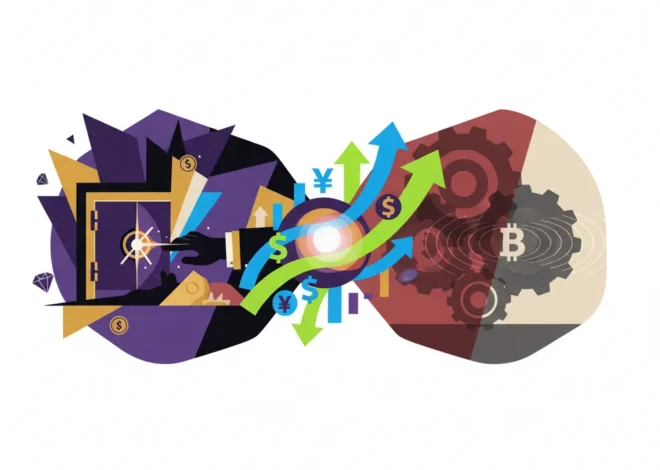
Target’s Strategic Reset: Why 1,800 Layoffs Signal a Deeper Shift in the Retail Economy
In a move that sent ripples through the retail sector and the financial markets, Target announced a significant corporate restructuring that includes slashing 1,800 office jobs. This decision, described as the company’s first major job cut in a decade, is far more than a simple line item on a balance sheet. It’s a calculated, high-stakes maneuver in a bid for a comprehensive turnaround, reflecting immense pressures from a shifting global economy, evolving consumer behavior, and relentless competition. For investors, finance professionals, and business leaders, this action serves as a critical case study in corporate agility, strategic finance, and the future of retail in an increasingly digital world.
This isn’t merely about reducing headcount; it’s about reallocating capital and refocusing a corporate giant. Understanding the “why” behind this decision requires looking beyond the headline to dissect the complex interplay of macroeconomic forces, stock market expectations, and the technological arms race that defines modern commerce.
The Anatomy of a Retail Turnaround
A corporate “turnaround” is often misconstrued as a purely defensive measure. In reality, it’s a proactive strategy designed to realign a company’s operations, finances, and vision with a new market reality. For Target, this reality is shaped by several powerful headwinds. Post-pandemic consumer spending habits have normalized, shifting away from discretionary goods—a core part of Target’s product mix—towards services and experiences. Simultaneously, persistent inflation has squeezed household budgets, making consumers more price-sensitive and forcing retailers to compete aggressively on value.
These macroeconomic pressures are evident in the company’s recent performance. While Target remains a dominant force, it has faced challenges with inventory management and maintaining profit margins. According to its Q4 2023 earnings report, the company saw a decline in comparable sales, a key metric in the retail industry, signaling a need for decisive action to bolster its financial health. This move to streamline its corporate structure aims to create a leaner, more agile organization capable of responding faster to market shifts. The economics are straightforward: reducing operational overhead frees up capital that can be reinvested into strategic growth areas like supply chain logistics, e-commerce capabilities, and in-store experience enhancements.
A Green Giant Stumbles: Why Vestas' Polish Pause Signals a Storm for European Wind Energy
Impact on the Stock Market and Investor Sentiment
The announcement of mass layoffs often elicits a predictable, albeit paradoxical, reaction from the stock market. In the short term, a company’s stock price frequently rises. This is because Wall Street interprets such measures as a sign of disciplined financial management and a commitment to improving profitability. For traders and short-term investors, the news can signal a potential uptick in earnings per share due to reduced expenses. From a corporate finance perspective, it demonstrates leadership’s willingness to make tough decisions for the sake of shareholder value.
However, the long-term view is more nuanced. While the immediate cost savings are clear, savvy investors are asking deeper questions: Is this restructuring a symptom of a more profound, underlying weakness in the company’s business model? Can Target innovate its way to growth, or is it simply cutting its way to temporary profitability? The answer will determine the stock’s trajectory over the coming years. This move puts immense pressure on Target’s leadership to prove that this is not just a cost-cutting exercise, but the first step in a larger, more ambitious plan for growth and innovation.
To contextualize Target’s position, it’s helpful to compare its operational scale with its primary competitors. The following table provides a high-level overview of these retail giants.
| Company | Approx. Global Employees | Primary Business Model | Key Strategic Focus |
|---|---|---|---|
| Target | ~440,000 | General Merchandise Retail (Brick & Mortar + E-commerce) | Curated “cheap-chic” branding, owned brands, omnichannel experience. |
| Walmart | ~2.1 Million | Discount Retail & Grocery (Brick & Mortar + E-commerce) | Everyday low prices, massive scale, grocery dominance, supply chain efficiency. |
| Amazon | ~1.5 Million | E-commerce & Cloud Computing (AWS) | Digital-first, vast selection, Prime ecosystem, logistics innovation. |
This comparison highlights the different strategic battlegrounds. Target’s layoffs are a move to become more efficient and nimble, allowing it to better compete against Walmart’s scale and Amazon’s digital supremacy.
The Broader Economic Context: A Bellwether for Retail
Target’s decision is not happening in a vacuum. It’s a bellwether for the broader retail sector and, to some extent, the entire economy. For years, the industry has been grappling with the seismic shift to e-commerce, a trend accelerated by the pandemic. Brick-and-mortar retailers that survive and thrive are those that have successfully integrated their physical and digital operations into a seamless omnichannel experience.
This restructuring is an acknowledgment that the post-pandemic economic landscape requires a different operational blueprint. Companies across various sectors are re-evaluating their cost structures in anticipation of slower economic growth and continued pressure on consumer spending. The era of “growth at all costs” is being replaced by a renewed focus on sustainable profitability and operational efficiency. This shift has significant implications for everything from commercial real estate to the banking sector, which finances retail operations. This move by a major player like Target could signal a wider trend of corporate belt-tightening across the U.S. economy, a development that economists and policymakers will be watching closely.
The Great London Exodus: A Demographic Time Bomb for the UK Economy?
The Future is Forged in Technology and Finance
Ultimately, Target’s long-term success will hinge on its ability to leverage technology to create a competitive advantage. The savings from this restructuring must be viewed as a war chest for technological investment. The future of retail lies at the intersection of data, logistics, and financial technology.
Consider the potential applications:
- Fintech Integration: Enhancing the Target app with more sophisticated financial tools, such as budgeting features, personalized offers driven by AI, or seamless integration of “buy now, pay later” services could deepen customer loyalty and increase transaction values. This is a key area where financial technology can directly boost the bottom line.
- Supply Chain Modernization: The global supply chain remains a complex and often inefficient system. Investing in AI-powered predictive analytics for inventory management or exploring blockchain for transparent and ethical sourcing could drastically reduce costs and mitigate risks, as noted by industry experts at Deloitte.
- Data Analytics: A leaner corporate structure should, in theory, be able to use data more effectively. By investing in robust analytics, Target can better understand purchasing patterns, optimize pricing strategies, and personalize marketing efforts at an individual level, creating a stickier customer ecosystem.
These are not futuristic concepts; they are the current battlegrounds where retail wars are won and lost. The companies that successfully integrate these technologies into their core operations will be the ones that lead the market. This is where the worlds of retail, technology, and banking converge to shape the future of commerce.
Conclusion: A Painful but Necessary Pivot
Target’s decision to eliminate 1,800 positions is a stark reminder of the unforgiving nature of the modern economy. It’s a painful step with a significant human cost, but from a strategic finance perspective, it’s a necessary pivot to prepare for the challenges and opportunities that lie ahead. This move is less about the company’s past struggles and more about its vision for the future—a future that demands greater agility, technological prowess, and an unwavering focus on operational efficiency.
For those engaged in investing, trading, and finance, Target (TGT) has become a fascinating stock to watch. Its journey will offer invaluable lessons on how a legacy brand navigates a landscape being reshaped by technology and economics. Will this strategic reset unlock a new era of growth and innovation, or will it be remembered as a defensive move in a losing battle? The execution over the next 18-24 months will provide the definitive answer.


